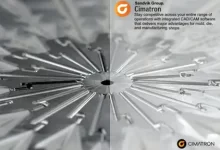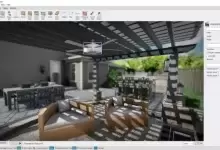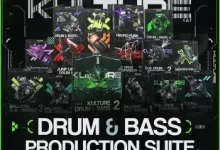文件大小:590 MB
Solid Edge 是目前功能最全面的混合 2D/3D CAD 系统,采用同步技术加速设计与编辑流程,并增强了对导入几何体重复利用的支持。作为 Velocity Series 解决方案组合的核心,其具备卓越的零件与装配建模、图纸设计、透明化数据管理工具,以及集成有限元分析模块,可应对日益复杂的产品设计挑战。
新版基于同步技术强化功能,大幅提升产品设计效率,简化跨CAD系统的数据修改、导入与应用流程。新增有限元分析改进方案、设计数据管理优化及千余项用户自定义变更。
西门子PLM通过同步技术概念的深化,拓展了该技术在系统内全流程的应用场景。除既有的零件与钣金建模外,现可直接在管路设计、桁架结构、电气布线等装配场景中使用同步模型。首度实现同步零件间的关联性,支持用户在装配全周期内自由创建与编辑设计方案。
系统提供同步结构与历史树结构混合设计环境。同步结构用于快速设计与柔性编辑模型,历史树结构则适用于铸造件与机加工零件设计。历史树元素可选择性转换为同步结构,为设计师提供更高灵活度。
随着其他3D系统用户向Solid Edge迁移的趋势增强,新增2D图纸与3D模型双向联动功能:技术标注可自动映射至导入的3D模型,并实现同步即时编辑,显著提升生产效率。
有限元分析模块新增扭矩与圆柱支撑载荷类型、自定义约束条件,以及螺栓连接与钣金加强筋等装配连接方式。模型简化工具加速计算过程,增强型可视化工具支持模型内部观察。
支持同步技术与历史树双模式模型调整,在设计初期即可进行零件与装配验证,缩短产品上市周期并降低原型制造成本。
千项用户驱动改进覆盖钣金建模、管件桁架设计、装配管理与图纸工具等模块。钣金设计环境新增多类型边角闭合方案、蚀刻标识元件及物流耳片等工艺特征。
图纸创建功能升级:完整继承3D模型技术标注与装配标识,支持多色线型呈现。新增”国际化”图纸功能,可在同一标注中集成多国语言字符集。优化的径向菜单界面与精简对话框最大化图形工作区。

File size: 590 MB
Solid Edge is the most full-featured hybrid 2D / 3D CAD system that uses synchronous technology to accelerate design and editing process, as well as enhanced support for reusing imported geometry. Solid Edge is a key component of the Velocity Series solution portfolio and features excellent tools for modeling parts and assemblies, drawing designs, transparent data management, and an integrated finite element analysis module that allows you to successfully cope with the increasing complexity of designed products.
The new version of Solid Edge offers enhanced functionality based on synchronous technology, which significantly speeds up the product design process, simplifies the modification, import and application of data created in various CAD systems. The latest version includes improvements in finite element analysis, design data management, and over a thousand user-defined changes.
Implementing the concept of synchronous technology, Siemens PLM Software has expanded the possibilities of using synchronous technology in the entire system. In addition to support for modeling parts and sheet bodies implemented in previous versions, synchronous models can be used directly in assemblies — for example, in the design of pipelines, trusses, electrical wiring, and other types of products. First introduced associativity between synchronous parts, which allows the user to create and edit his idea before, during or at the end of the assembly design process.
Solid Edge provides the ability to work with both synchronous and conventional (ordered in the construction tree) structural elements in a single integrated design environment. Users can use synchronous structural elements to speed up the design process and flexible editing of models, and elements with a construction tree – for designing cast parts and parts obtained by machining. Elements with a construction tree in existing models can be selectively converted to synchronous, which gives the designer more flexibility and ease of use of the system.
As the number of enterprises making the transition from other 3D systems to Solid Edge and using the advantages of synchronous technology is growing, the possibility of combining 2D drawings with existing 3D models has emerged – another way to increase productivity. Technological dimensions in 2D drawings can now be automatically transferred to the appropriate imported 3D model. The resulting “production” 3D dimensions can be edited immediately, and the imported 3D model changes simultaneously due to synchronous technology.
Solid Edge has an application for finite element analysis, including new types of loads – torque and load in a cylindrical support, user-defined constraints, as well as new ways of connecting parts in assemblies, such as bolted connections and rib connections for sheet metal parts. The tools to simplify models allow you to quickly get the results of calculations, and improved visualization tools – to see the model from the inside.
The model can be adjusted using either synchronous technology or using a construction tree. Solid Edge provides control of models of parts and assemblies in the early stages of design, which reduces the time to market products and the cost of manufacturing prototypes.
In Solid Edge, thousands of customer-defined improvements that further increase the return on this product at all stages of the product design process. New functionality has appeared in various modules, including modeling of sheet bodies, pipelines and truss structures, assembly management and drawing tools. Improvements in the design environment of sheet bodies include new types of corner closures, an element for etching part designators and other geometry, as well as technological elements in the development of sheet metal parts, for example, shipping ears.
Solid Edge continues to raise the bar in the field of creating drawings, in which you can now transfer all technological dimensions and designations, designations of parts in the assembly, and even represent parts with different colors of lines in the drawing, borrowing them from the 3D model.
New “international” drawings allow you to use different sets of characters in different languages of the world in one drawing or in one callout. The simplified user interface includes a fully customizable radial menu, which reduces the number of mouse movements. Transparent dialogues for managing structural elements and details, as well as dialogs for reduced-sized commands, provide the largest area of the graphic workspace.
扫码免费下载










